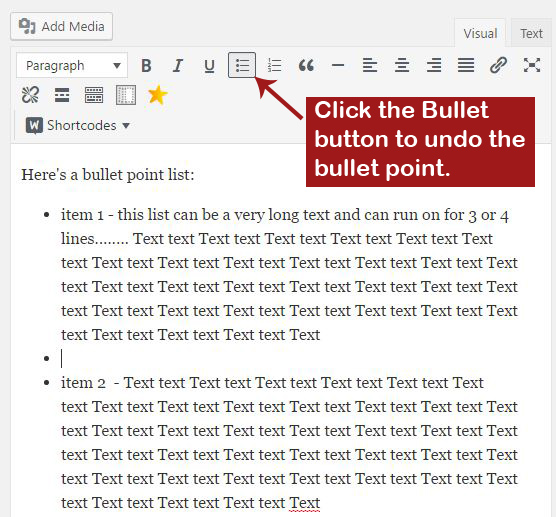

Continue this process until you complete your list. Press Enter or Return and add your next item. Type your first item next to the bullet that appears. To remove the bold from only one number in the list, select the paragraph return at the end of that list item (again, see above) and press ctrl + b.Īll the above instructions apply to both numbered lists and bulleted lists. Adding space before or after a paragraph is a great way to spread out a list of bullet points or numbered steps without affecting the line spacing within. Go to the Home tab, select the Bullets button in the Paragraph section of the ribbon, or open the Bullets menu to choose a specific bullet style. Ctrl + b is the keyboard shortcut for adding and removing bold. To remove the bold from all the numbers in a list, just select one number in the list (as shown above) and press ctrl + b. This leads us on to the solution to the problem of removing the bold from a numbered list. For this, you will need to select the carriage return at the end of the desired list item.įormat that, and you format the number. You can also format just one number in the list, too. Then use the standard formatting commands to format the numbers. To format the numbers separately from the other text, select any of the numbers in the list. Select AutoCorrect Options, and then select the AutoFormat As You Type tab. You can turn off the automatic list recognition feature. By default, if you type an asterisk or 1., Word recognizes that you are trying to start a bulleted or numbered list. This means that you can have a list that looks like this, for example: Turn on or off automatic bullets or numbering. Not many people know that you can format the numbers or bullets in a list differently to the list items themselves.


 0 kommentar(er)
0 kommentar(er)
